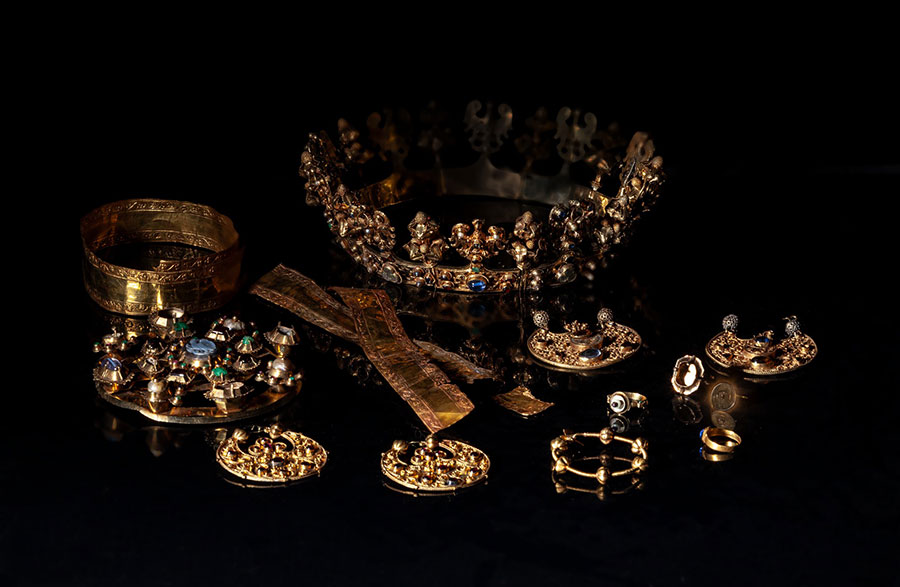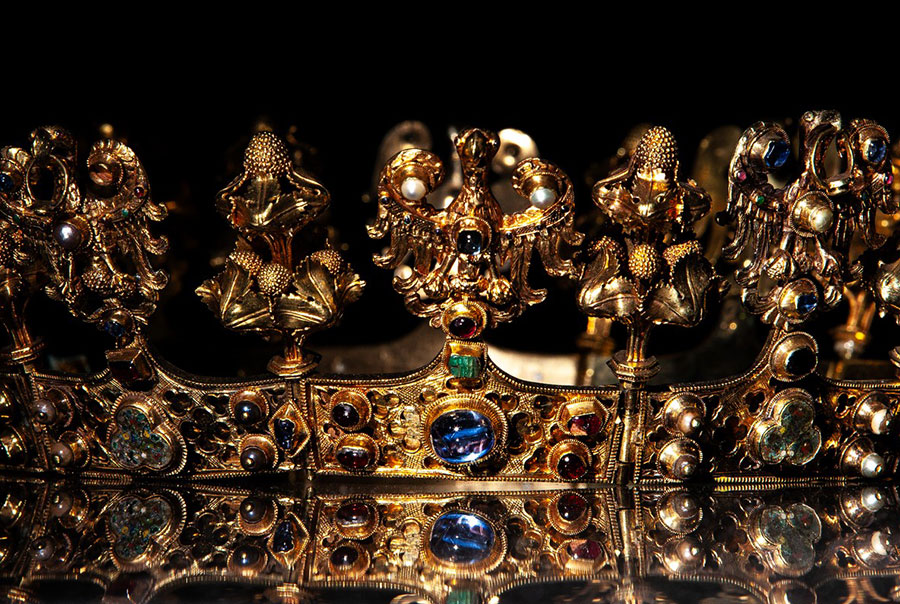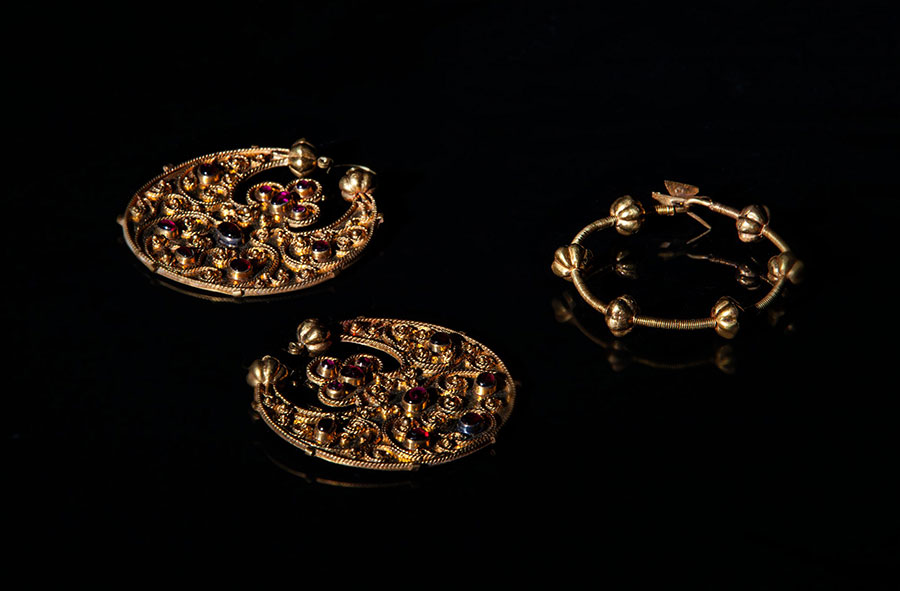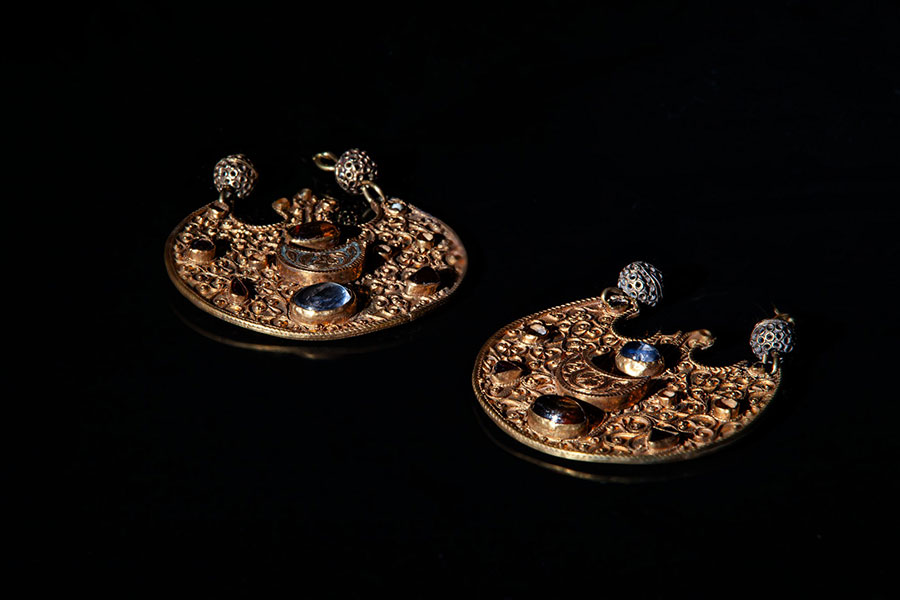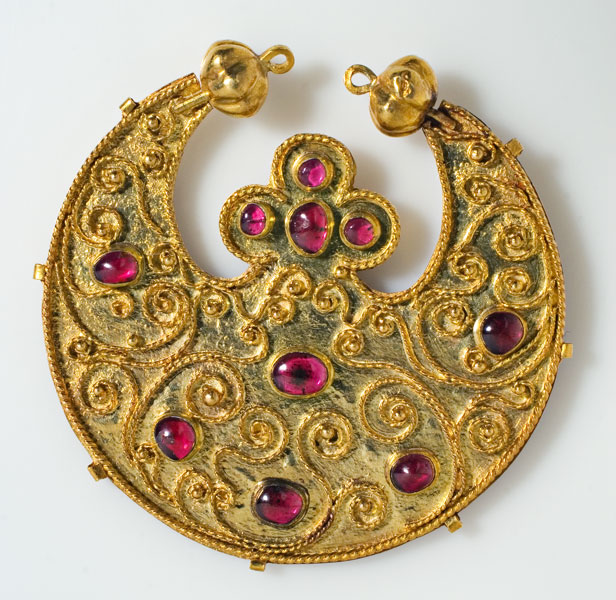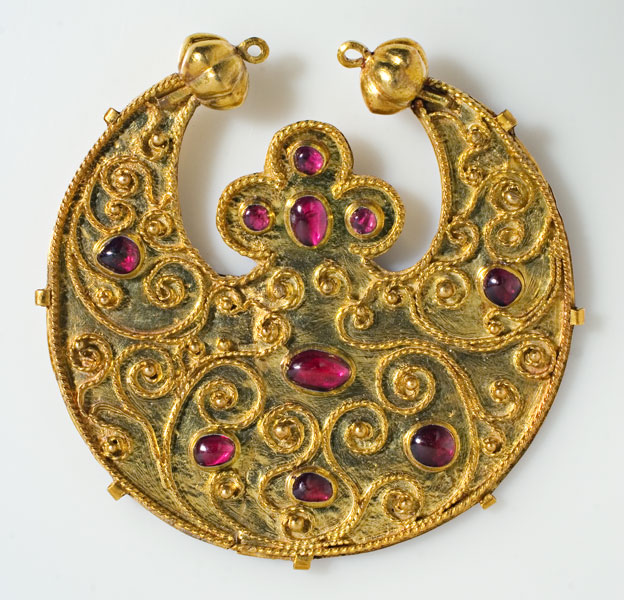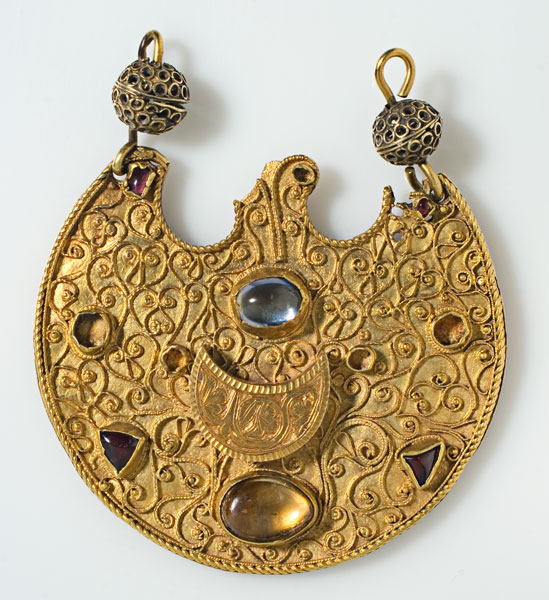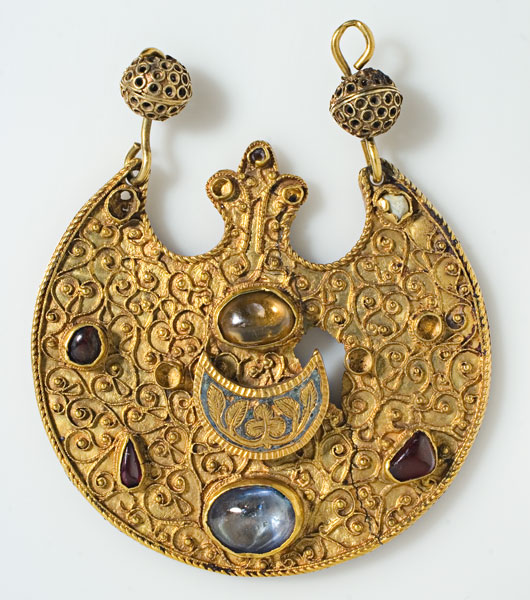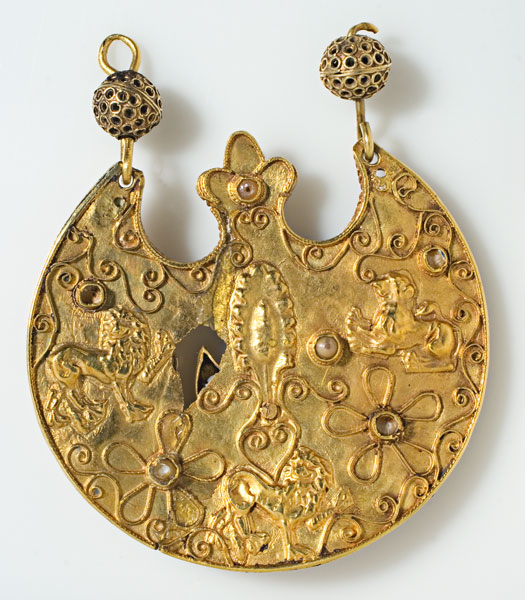1 October – 30 December 2025
Fot. A. Podstawka
Curator of the exhibition: Jacek Witecki
One of the most precious treasures found in Europe in the 20th century can be viewed during the last three months of 2025 in the National Museum in Wrocław. The royal wedding crown dating from the 14th century – the most valuable item in the treasure – is the star of this year’s exhibition.
Visitors will learn about the symbolic meaning of crowns, as well as the ceremonies and customs connected with wearing them. Along with the presentation of examples of gold smithery and coins found as part of the treasure, the exhibition presents the history of famous medieval royal crowns, some of which are known today only via descriptions and illustrations, and sheds light on their complicated fates.
Historical artefacts from the Środa Śląska Treasure
The crown is the most valuable part of the Środa Treasure. It is a woman’s crown commissioned on the occasion of a wedding, which is clearly indicated by the rings motif – a sign of marital commitment and symbol of a good omen.

The crown belonged to the Czech queens, and its last owner could have been Blanka (Blanche) de Valois, the first wife of Charles IV of Luxembourg.
This priceless piece was created in the early 14th cent. It is the only surviving medieval crown of this kind, and its exceptional value is further augmented by the supreme craftsmanship of the goldsmith.
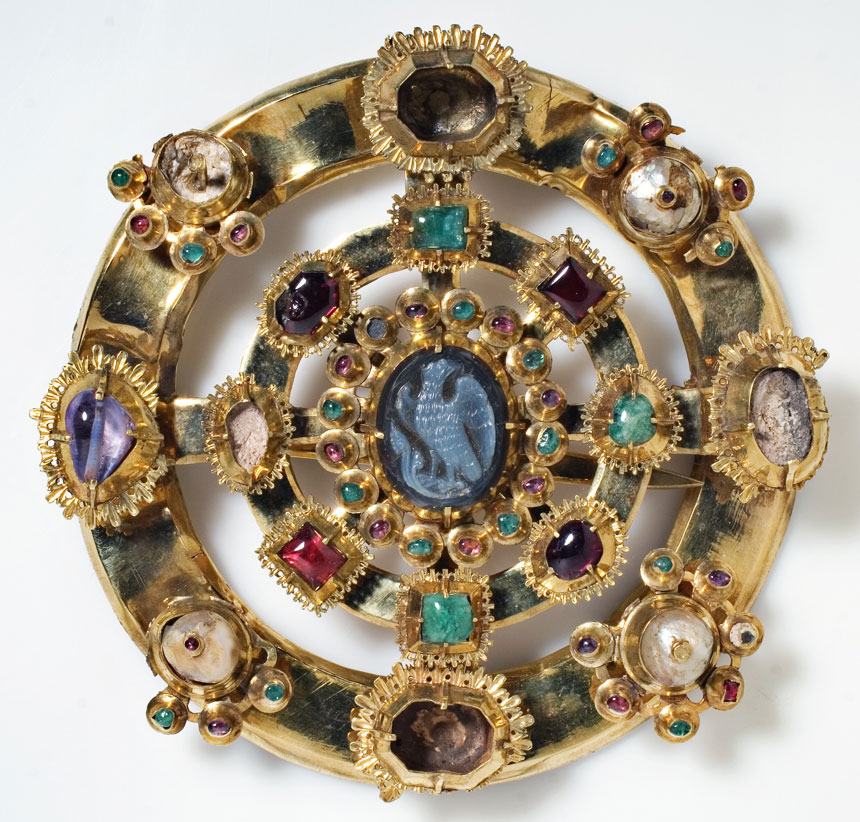
The second most valuable piece of jewelry is a round clasp, decorated in the centre with a chalcedony cameo depicting the imperial eagle. Around the cameo and along the inner ring of the clasp precious stones – garnets and emeralds – are set, while the outer ring retains a sapphire and pearls circled by garlands of emeralds and garnets. Such clasps were used to fasten ceremonial cloaks of courtiers as well as the coronation and liturgical robes.
Other exhibits on display are the gold pendants dating from the late 12th cent. and the 13th cent., used to adorn women’s heads (decorated with filigree as well sapphires, citrines, garnets and pearls), a buckle with a bird figurine, gold rings, ornamental strips used as edging for precious objects, as well as gold and silver coins.
The place and probable time of hiding these precious objects – before the mid-14th cent. – and the character of the jewels allow us to speculate that they constituted a bank collateral which had originated from Prague, from the Crown Treasury of the House of Luxembourg. The valuables found their way to Silesia, which was then part of the Czech Crown, during the rule of Charles IV. It has been known that the King borrowed heavily from the rich merchants of Środa Śląska in order to finance his political campaign to obtain the imperial title.
The treasure was placed in the collection of the National Museum in Wrocław, and was first shown to the public in 1996. The Środa Treasure is exhibited annually in the National Museum in Wrocław during the last three months of the year, and for the remaining nine months it can be viewed in the Regional Museum in Środa Śląska.
